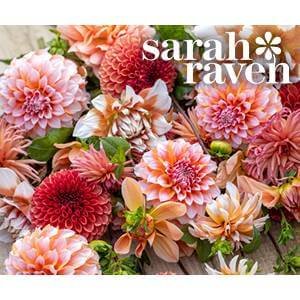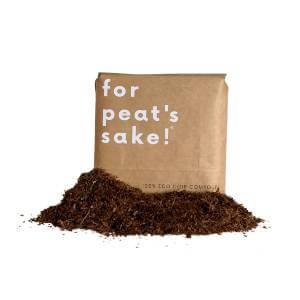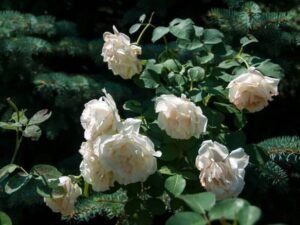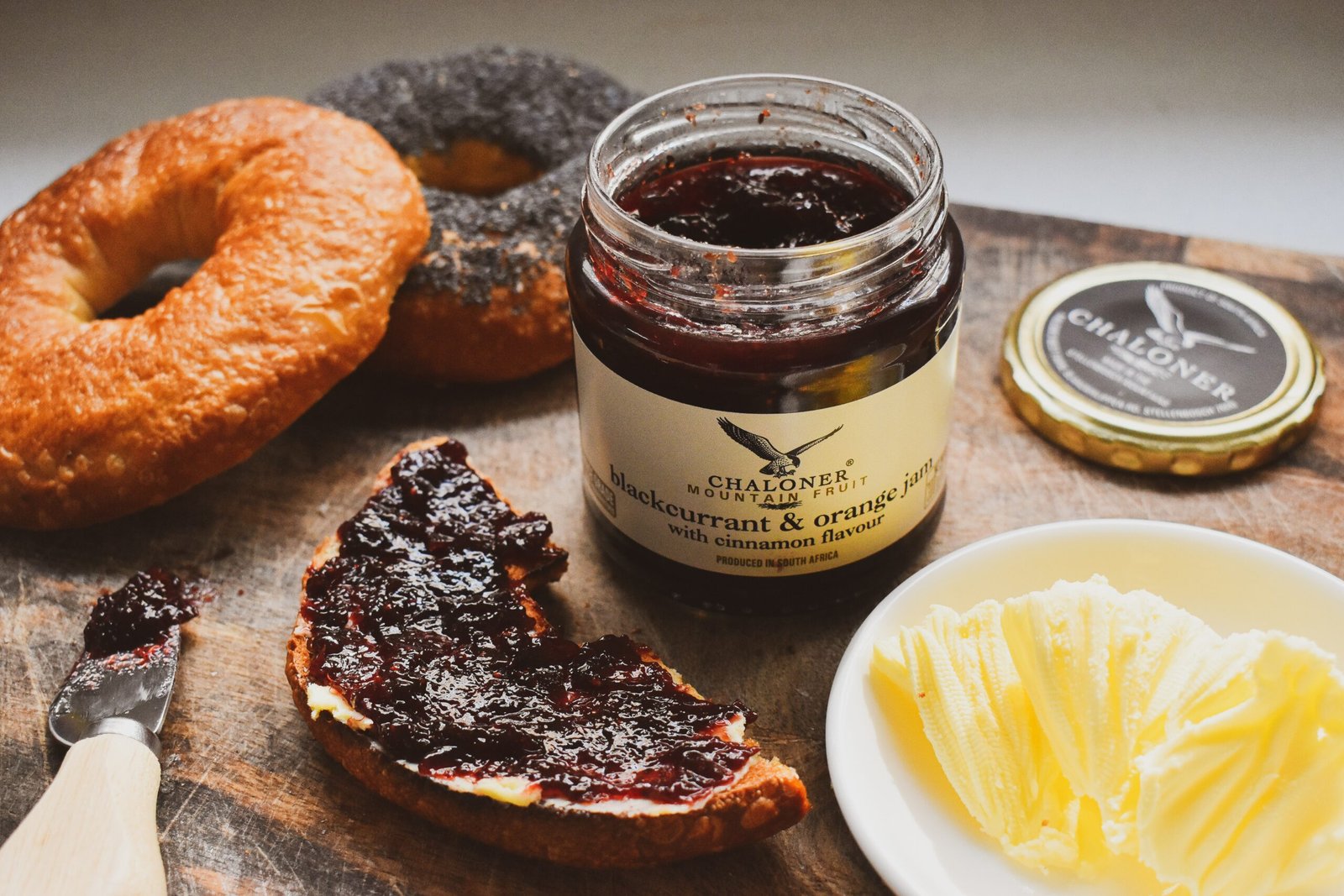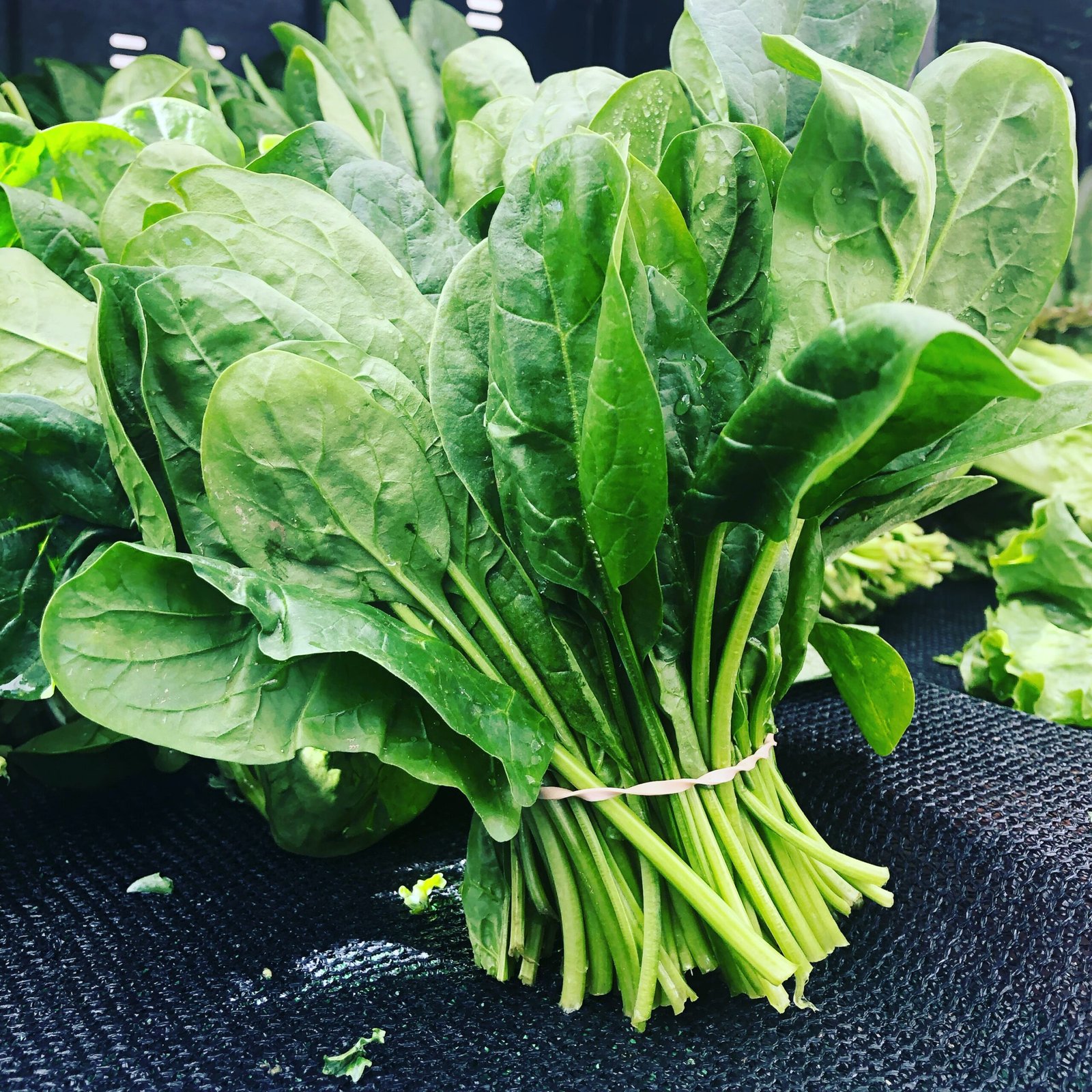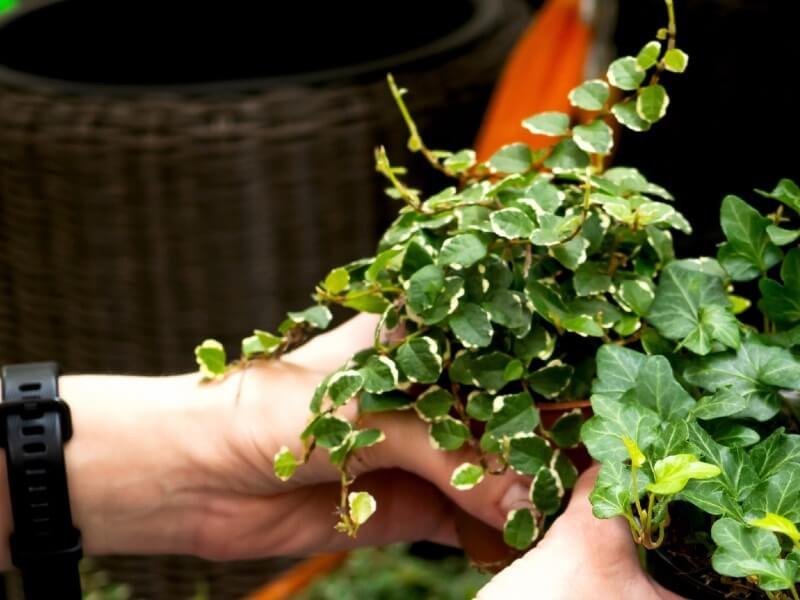
5. Creeping Fig (Ficus Pumila)
Unlike most other varieties of Ficus, the creeping fig has rather small leaves and long trailing stems. Part of the Moraceae or Mulberry family, the creeping fig is the most well-behaved vine plant.
Due to its roots and fast-growing nature, you will most likely have to re-pot your fig every two years, which isn’t as bad as it sounds and also means you can propagate new ones! But also make sure to prune your fig – its natural growing nature means it can grow out of control (sometimes) – and even a plus to those who need and want an easy plant.
Top Tip
Your creeping fig can also be trained to climb around a hoop or up a trellis, or as a climbing plant supported by a moss poll, where it receives its other common name the climbing tree.
Where should I hang my Creeping Fig?
We’ve got an easy one for you; this plant loves a position where other plants typically don’t thrive. It does not need very much light to succeed and prefers a shaded spot, albeit it will grow in any light, but like most others don’t place in direct sunlight.
The world is your oyster with regards to the position of your plant, so put it where you want and feel. Figs are known to grow notoriously quickly, reaching lengths 23-30cm in one year, so make sure you have enough room, or you’re ready to prune your fig.
When should I water my Creeping Fig?
The first tip is to make sure that the plant never dries out, checking the top of the soil before watering – if dry then its best you water it. You may find it is best to spray your plant with water to create the optimal environment, which is excellent for its humidity.
If you’re planning to keep your fig in a hot room during the winter period, make sure you water it more generously. It is that simple!
Why should I pick a Creeping Fig?
Not only is this such an easy-going plant and quick to grow, but its small delicate heart-shaped leaves, densely cover its long stems and its thick vine leaves – it is true the saying that less is more.
Toxic Warning
Important note that Creeping Figs are toxic to pets and humans if consumed!
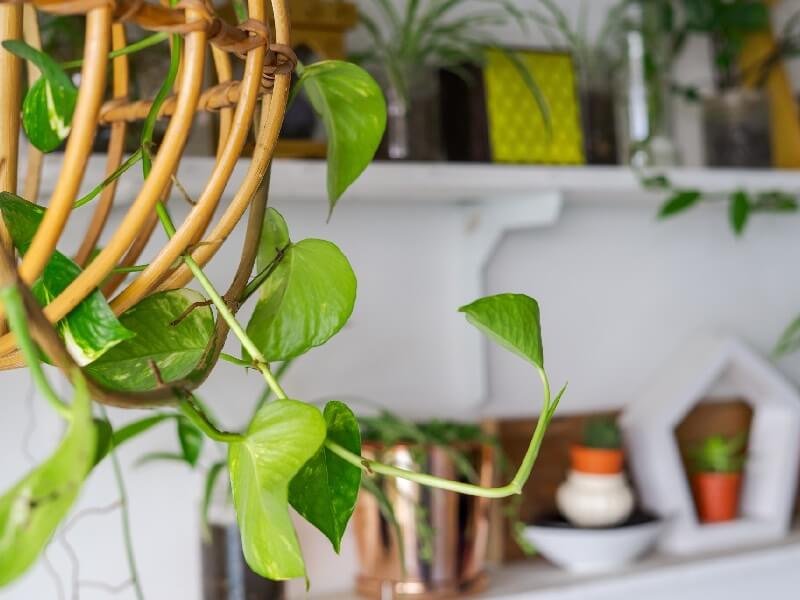
4. Golden Pothos (Epipremnum Aureum)
Part of the Araceae Family or Arum family, these aren’t the plants only names, also more commonly known as money plant, devil’s vine or devil ivy; but don’t let the devil part put you off.
If you’re a beginner to the planting world, this plant is perfect for you because it’s practically impossible to kill off, as some say! So, this is the ideal plant to impress your friends and family by pretending you know how to keep a plant alive.
Top Tip
When your pathos is not getting enough sunlight, they will lose their different coloured appearance in each zone, known as variegation.
Where should I hang my Golden Pothos?
They are one of the best indoor plants; they are perfect for the bedroom to purify airborne toxins replacing carbon dioxide with oxygen. Combined with the benefits of helping you breathe easier and overall proven to help give you get a better night sleep, what is there not to love?
They thrive the most with a mix of moderate light and some shade, which will bring out its stunning colour. But here’s one for those who may find it hard to have this particular light, this plant will withstand and stay alive albeit with stunted growth, even in darkness!
This plant can also withstand direct bright light but be warned; the leaves will burn.
When should I water my Golden Pothos?
If you are someone who forgets to regularly water plants, then this plant is ideal, as these devil plants are so hard to kill, the only thing that will kill them is overwatering them.
The pothos will not like it if they sit in a continually moist soil; this will result in it most likely fall victim to root rot.
The best way to water this plant is to feel the soil, if it feels wet, then you don’t need to add any more water, but if the soil is feeling dry, then you need to water your plant, making sure to water moderately throughout the year.
Why should I pick the Golden Pothos?
The name golden pathos is said to derive from the variegated golden-yellow leaves that look bright and waxy, with a pointy heart-shaped figure; these are some of the most popular cultivators of Epipremnum and we are not surprised!
Inside, as houseplants they confine themselves to around 6-10 feet, making them a stunning hanging plant!
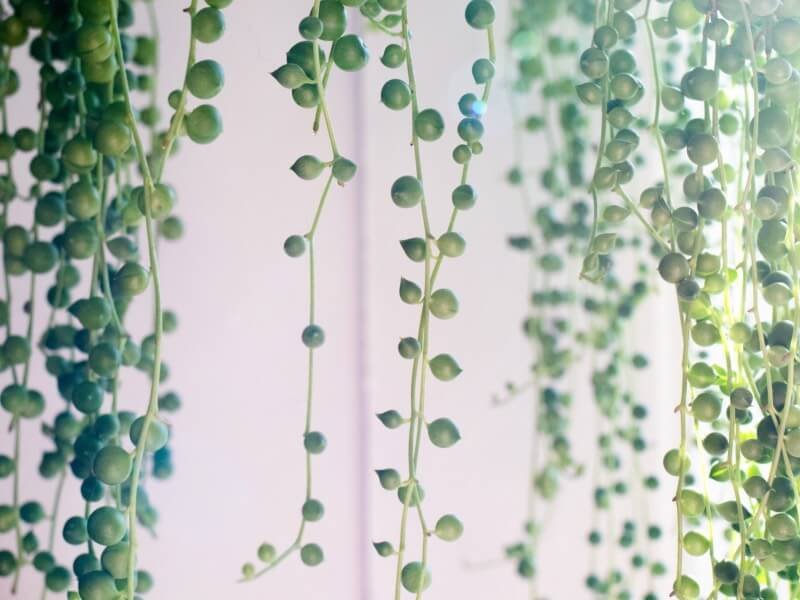
3. String of Pearls - (Senecio rowleyanus)
Belonging to the family Asteraceae, this succulent plant, like many others, requires very little care due to its low maintenance need for watering.
This plant received its name from British botanist Gordan Douglas Rowley who specialised in succulents and cacti, and it is a breath-taking plant, that is so instagrammable – we are quite frankly obsessed with it!
Top Tip
These plants are straightforward to propagate (grow new ones), which is perfect as you can make the original look a lot fuller when re-potting, and an ideal unique (free) gift for friends and family. Simply take cuttings and place them into the soil and allow them to take root.
Where should I hang my String of Pearls?
These are the perfect hanging plant as the tendrils need room to sprawl out and hang down; the stems will trail down for 60-90 cm.
They typically do well in a bright space; an ideal location would be by a sunny windowsill; it can also handle a little lower light. Try to avoid placing it in drafty areas and keep in an average indoor temperature room. Direct sunlight is not preferable.
Therefore an east-facing window is preferred thus receives the first-morning weak rays of sunshine, and by midday, direct sunlight usually has stopped shining. It’s a natural source of heat without being too extreme.
When should I water my String of Pearls?
These plants like to completely dry out between their watering’s; this is due to the pearls storing water inside them – a little drought never kills any pearls!
They don’t like their roots to be sitting in water, therefore using a well-drained soil will be beneficial for succulent. As well as this, it’s best to plant in a pot with drainage holes using a cacti potting mix. One top tip don’t overwater it – but yes it is that easy!
Why should I pick the String of Pearls?
Where do we even start with this? The first reason why we would choose this is how incredible it looks in hanging pots, but this plant also blooms and a bonus – they are fragrant!
To encourage these tiny white spring flowers cut back on watering and move to the slightly cooler area during winter. Although they do take quite a while to bloom, all the patient is worth it.
Toxic Warning
Important note that these are toxic to pets and children if consumed and be sure to watch out for fallen beads!
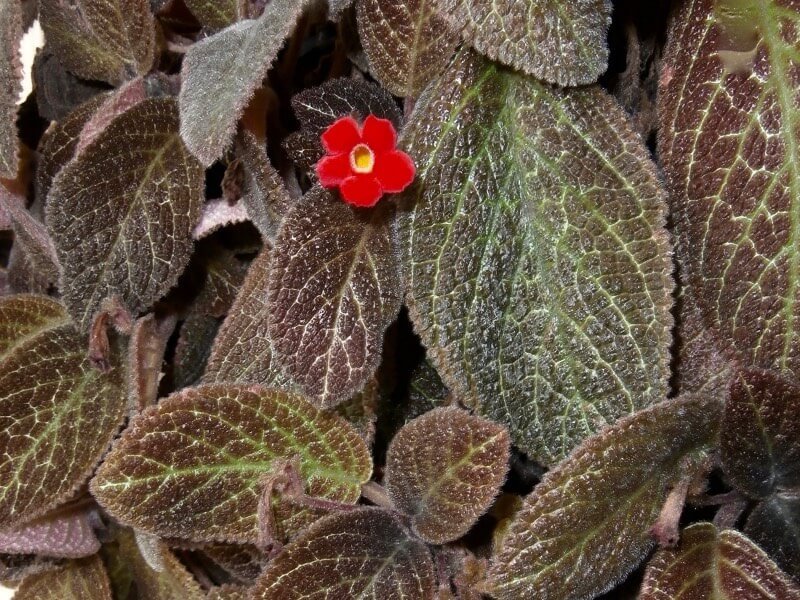
2. Flame Violet (Episicia)
Native to the tropical regions of Central and South America, this plant is part of the African violet family Gesneriaceae. Other names for this plant include trailing violet or chocolate soldier plant.
Also known as the carpet plant since it spreads by means of a runner, meaning that it tends to grow horizontally as opposed to upright, like the main stem. It gets its common name from the brightly coloured petals that appear on the plant from June through September, which we think only adds to this beautiful plant.
Top Tip
The flame violet is a perennial plant meaning to last for a long time, or continually reoccurring, so it should endure a long life.
Where should I hang my Flame Violet?
The flame violet thrives of dry air, making it perfect for either the bathroom, kitchen or if you have a greenhouse/conservatory these would be the ideal rooms. If the humidity in your home is below 40 degrees, your plant will benefit when setting on trays of pebbles with water just below the pot line.
It does enjoy plenty of light but doesn’t like intense rays of the mid-day direct sun – this will result in it losing its leaf colour. If keeping in your bedroom, bathroom or kitchen hanging it by a window with indirect sunlight would be perfect but try to stay away from drafty windows or heat vents!
If you do place in a south-facing window with direct sunlight, seek to protect your plant from the mid-day rays by filtering through a blind or a curtain. Either way, wherever you place this plant, and even when it is not in bloom, it is truly stunning!
When should I water my Flame Violet?
Well, after all the information on where you should hang your plant, we will try to keep this short and straightforward, emphasis on try. It’s best to water your flame violet during summer moderately and during the winter even more sparingly; letting the potting compost dry out slightly in between.
It is also best to use room temperature or lukewarm water; this is due to when cold water spills onto the leaves it can cause yellow spots – also another quick one is that your flame violet leaves can become prone to fungus and will spot if they are misted.
Although it seems hard, there are beautiful visual benefits from your hard work!
Why should I pick the Flame Violet?
Not only do the flowers make this plant stand out in comparison, but the leaves themselves are also picturesque to look at, these are heavily textured and marked, with a coppery or silvery colour, these showy leaves grow in a rosette. They can reach 5-8cm long!
Other Varieties related to the Flame Violet
African violet and Gloxinia, as well as two of the four species of flame violet that are also popular house plants; Espiscia reptans, dianthiflora, lilacina and punctate.
Toxic Warning
Some good news for all the pet lovers out there, this plant is non-toxic to dogs and cats, although we still would recommend keeping it away from them, so they don’t eat it!
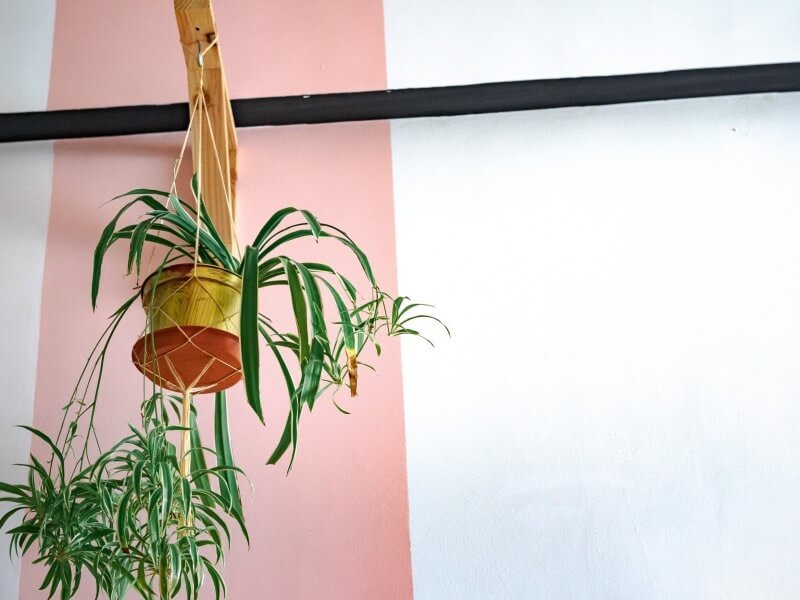
1. Spider Plant (Chlorophytum comosum Vittatum)
This white striped leaf plant belonging to the family of the Asparagaceae, is immediately recognisable by its narrow and graceful arching green leaves. This plant grows fairly quickly and looks most decorative when the stems can hang free, making it an ideal hanging plant.
Not only this, these plants produce long flower stalks, with small white flowers at the tip during the spring/summer period when daylight increased. Even though these flowers are short-lived, they are followed by young plantlets – which are younger or smaller plants hanging down from the mother plant that look like spiders on a web deriving its common name.
Top Tip
This plant will last for years, and even when neglected, but you will be able to tell when it needs feeding or re-potting when the tips of the leaves turn brown.To prevent this, give your spider plant a liquid feed once a week from June until September, and re-pot when the roots fill the pot, using a soil-based compost pot (preferably also do this in March or April).The better you look after your plant, the better it will look.
Where should I hang my Spider plant?
These plants are the most adaptable house plants due to their easy-going nature in a variety of environments. They do not like direct sunlight as it can cause their leaves to burn, which result in brown tips and spots on their leaves.
Try to find a place where it will get some bright to moderate indirect sunlight, east or west-facing window is perfect, where it will benefit from the bright morning sun followed by long shadows and softer light.
The ideal temperature for them is (13-27 C), making them a perfect indoor plant. As well as this, the maximum height for the spider plant is 15-25cm, the leaves grow to a length of 30-60cm while flower stems are 45-60cm long, which is why they are the ideal hanging plant as they are free to grow.
We know, sorry this is a whole lot of information, but don’t worry your spider plant is tough!
When should I water my Spider plant?
During the summer period water generously and try to aim 2-3 times a week, depending on the temperature. However, it’s best not to let the soil become waterlogged; it can tolerate drought but not over watering.
From October to March, water moderately, to ensure the ground is just moist. Like we mentioned though your spider plant is incredibly tough due to the roots being able to store water, so try not to keep it dry for an unnecessarily long time.
Ideally try to keep the soil even, not too wet not too dry.
Why should I pick the Spider plant?
The spider plant symbolises caring, mindfulness and health, its small size makes it perfect for apartments. NASA has said that this plant removes 95% of benzene, formaldehyde, carbon monoxide and nitrate from the air.
Where for very little in return it helps keep our lungs clean and fresh; which is why there is no surprise it’s made our top 5.
Our favourite pots for your hanging plants!
It is right plants are calming and soothing for your soul! So, treat yourself and your plants, you both deserve it! We’ve been searching far and wide (ok only amazon) for our favourite pots for your hanging plants and made a comfortable space for you to find the perfect one for you and your plants!
Fancy something a bit different? Well, this is perfect; it gives you the option to use your plant pots and adds a boohoo element to highlight your greenery. With the choice of two different designs, it will give your area a minimalist feel, and we are struggling to think of somewhere where these wouldn’t look amazing! Using all-natural materials, what is there not to love!






















